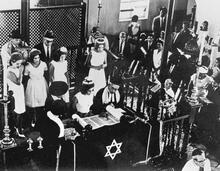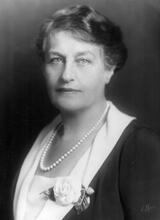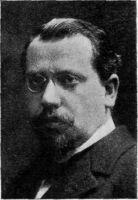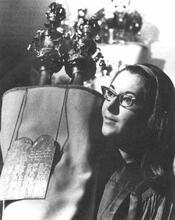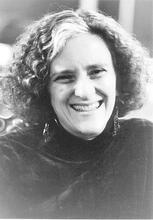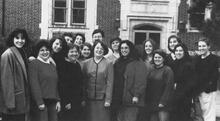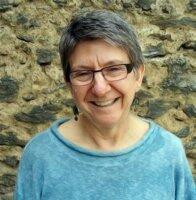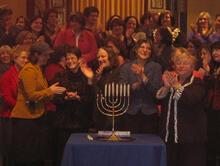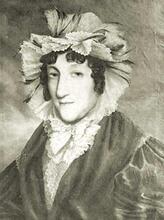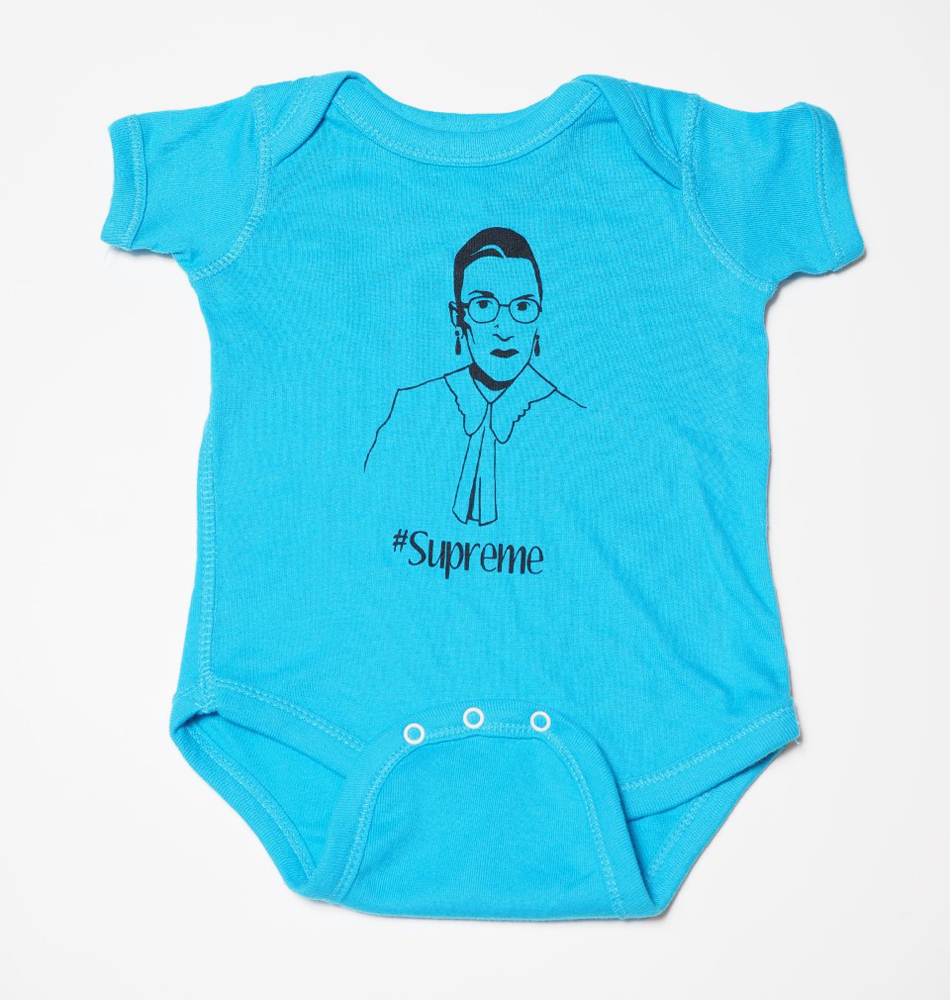Reconstructionist Judaism in the United States
Reconstructionist Judaism was founded by Mordecai Kaplan in the United States in the early twentieth century. Reconstructionism understands Judaism to be “the evolving religious civilization of the Jewish people” and seeks to integrate modern ideals, foremost among them a commitment to democracy, into Jewish life. From its founding, Reconstructionism has been expansive around amplifying the voices and experiences of women in Jewish life, creating the first bat mitzvah ceremony in 1922, counting women in the minyan in 1950, admitting women from the earliest years of the Reconstructionist seminary, raising women to leadership at all levels of the movement, and creating rituals and liturgy that reflect a feminist perspective. These commitments have served as a springboard for ongoing inclusion of other populations previously marginalized by mainstream Judaism.
Introduction
Unlike other branches of American Judaism, Reconstructionism originated on American soil in the philosophy of one individual, Rabbi Mordecai Kaplan (1881–1982). Kaplan is renowned for his definition of Judaism as an evolving religious civilization. The term “Reconstructionism” draws from John Dewey’s progressive approach to education and comes from Kaplan’s insistence that Judaism should be neither reformed nor conserved but rather reconstructed. Reconstructionists use the foundation and building blocks they have inherited from the past, reordering and adding to them so that they fit the needs, values, and tastes of current generations, but without altering them in ways that would make them unrecognizable or sap their richness. As part of his program for reconstruction, Kaplan rejected a supernatural theology and repudiated the concept of the chosen people.
Kaplan was a controversial figure in American Jewish history because of his willingness to confront difficult issues. Among his bold new ideas was advocacy for changes in women’s roles in Jewish life, which grew out of his commitment to democratic principles. Kaplan was a principal architect of women’s equality in Judaism. While the philosophy of Reconstructionism has undergone significant changes since Kaplan’s death, the equality of women remains a central tenet and the springboard for robust inclusion of other populations marginalized by The legal corpus of Jewish laws and observances as prescribed in the Torah and interpreted by rabbinic authorities, beginning with those of the Mishnah and Talmud.halakhic Judaism and mainstream Jewish communal institutions.
Mordecai Kaplan's Life and Thought
The concepts and teachings of Mordecai Kaplan form the basis for understanding Reconstructionism’s pioneering role in the struggle for women’s equality in Judaism. Kaplan’s commitment to the equality of women was an essential part of his life and thought. Born in Lithuania, he was the son of an Orthodox rabbi who immigrated to the United States to assist Rabbi Jacob Joseph (1848–1902) in his work as chief rabbi of New York. Though Orthodox, Kaplan’s father educated his daughter Sophie in both Jewish and secular subjects alongside his son Mordecai. As a young man, Kaplan served an Orthodox congregation, the Jewish Center in New York City, as rabbi. He left this position to found the Society for the Advancement of Judaism (SAJ) in New York City in 1922. Part of Kaplan’s motivation for founding the SAJ was the insistence of the Jewish Center’s membership on retaining the traditional practice of separate seating for women and men and its refusal to set up a women’s organization in the synagogue. Those who joined the SAJ did so to follow Kaplan’s leadership.
From the SAJ’s founding, women were full members, and its Women’s Division was a formidable educational and cultural force. Yet ambivalence about women’s status persisted. Inspired by the passage of the Nineteenth Amendment, one of Kaplan’s first actions after founding the synagogue was to inform the new board of his plans to inaugurate a bat mitzvah ritual, a puberty ceremony for girls. In March 1922, his eldest daughter Judith Kaplan (Eisenstein) recited the Torah blessings and read from the Humash (the five books of Torah she-bi-khetav: Lit. "the written Torah." The Bible; the Pentateuch; Tanakh (the Pentateuch, Prophets and Hagiographia)Torah), and Kaplan himself took the Lit. "ascent." A "calling up" to the Torah during its reading in the synagogue.aliyah (honor). At that time, the congregation was still divided into men’s and women’s sections, against his wishes. The following fall, at the first High Holiday services at the SAJ, Kaplan demanded mixed seating, achieving his goal despite opposition from congregants and members of his own family, male and female.
The Equality of Women in Judaism
In the 1920s, Kaplan frequently sermonized in support of women’s recently gained political emancipation, using biblical texts to prove his point. In 1935, Kaplan’s blueprint for women’s equality in Judaism, including ordination, was published in an early issue of the then biweekly journal The Reconstructionist; it was republished in The Reconstructionist Papers in 1936 and again in 1948 in The Future of the American Jew. Perhaps his most insightful comment in this essay was that equality could come about only through woman’s “own efforts and initiative. Whatever liberal-minded men do in her behalf is bound to remain but a futile and meaningless gesture. The Jewish woman must demand the equality due her as a right to which she is fully entitled.” Kaplan went on to present his critique of the status of women in Jewish life. He argued that the Jewish community would drive women out if it did not provide vehicles for their self-fulfillment. Cautioning women not to be fooled by those who argued that they already had an elevated role in Judaism, he made reference to the many negative comments in rabbinic literature about women’s intelligence and abilities. He ridiculed “The Woman of Valor,” the verses in Proverbs that extol women’s domestic virtues, as “the flattery of a parasitic husband.”
The essay goes on to discuss the ways Jewish law defines women as of inferior status to men and chronicles the religious and juridical disabilities inherent in that status: the exemption from the performance of A biblical or rabbinic commandment; also, a good deed.mitzvah (commandments) and the denial of the rights of women to lead prayer services, act as witnesses, inherit property, and initiate divorce. Kaplan concluded that Jewish law had to be changed to rid Judaism of these inequities and insisted that “social justice in the highest sense of the term rather than immutable precedent” must guide these changes. He made these suggestions more than 30 years before the movement for the equality of women in Judaism put them on the Jewish agenda.
In addition to Kaplan’s commitment to the equality of women in Judaism, several other elements of his philosophy play a significant role in Reconstructionism’s leadership on this issue. Reconstructionism is distinguished from other branches of Judaism by its theology. Influenced by the popular religious naturalism of his time, Kaplan did not accept the concept of God as person but rather saw God as the Power in the universe that makes for righteousness and salvation. Kaplan understood God as a process inherent in nature and humanity that brings about good in the world. His God is not an actor, controlling history, but can be perceived in the world through the best endeavors of human beings, acting b’zelem Elohim (in the image of God) and as co-creators to reinforce highest values. Kaplan’s theology is therefore a useful tool in dealing with the problem feminists confront when they face a prayer service replete with male God language. Although Kaplan himself never removed male references to God—such as the pronouns He or Him, or masculine concepts like King or Lord—his theology renders God “gender-neutral” and suggests that the use of male God language reflects human perceptions, not divine reality.
Living in Two Civilizations
Kaplan believed that to function effectively, American Jews should live in two civilizations, the Jewish and the American. He was convinced that Jewish life would flourish if immigrant Jews and their children understood that they did not have to give up their heritage and traditions to consider themselves fully American. In this regard, Kaplan became an early proponent of cultural pluralism. He was able to look back on Jewish history and see the continuous interpenetration of the ideas and norms of the larger civilizations in which Jews dwelled and the accommodations that Judaism made to these ideas and practices. He taught that Judaism is a continuously evolving civilization, not a static, immutable religious system, and that the Jewish people helped to drive these changes both reactively and creatively. It was this understanding that allowed Kaplan to make innovations in women’s roles and to embrace philosophies, like pragmatism and democracy, that had not previously been dominant in the Jewish experience. To Kaplan’s way of thinking, democracy was the next stage of human and social evolution, and democratic principles required universal suffrage, including equality for women in Judaism.
Jewish Law
Kaplan understood halakhah (Jewish law) as a component of the nonbinding but sacred inherited traditions of the Jewish people. Kaplan was himself observant of traditional ritual practices, but he also held Jewish law accountable to contemporary ethical standards. One of his most famous dicta was that halakhah should have a “vote, not a veto.” It was on this basis that Kaplan had no problem calling for the full equality of women, despite the obvious difficulties reconciling this stance with traditional halakhah and norms of Jewish practice. He also vigorously supported creative approaches to ritual. Because of Kaplan’s affinity for Jewish tradition, however, the changes he made in his own congregation and recommended in his writings were much less radical than those of the Reform Jewish thinkers of his era, who usually dismissed halakhic considerations. Even so, his attitude eventually proved too flexible even for the denomination that would come to be called Conservative, into which he had moved after his early years in Orthodoxy.
The Chosen People
By far the most significant element in Kaplan’s thought in relation to feminist principles was his passionate opposition to hierarchy. This was most boldly expressed in Kaplan’s decision to remove the chosen people doctrine from Jewish liturgy. Kaplan maintained that such a claim to divine election was inseparable from a claim to superiority. Grounding his arguments in ethics, he advocated the recognition that all peoples have unique and important destinies, which inherently invalidates the idea of one particular chosen people. This antihierarchical orientation is part of a larger worldview that does not give advantage to one group of people over another. It lends support to feminist endeavors in Judaism, for just as the Jewish people cannot claim a superior status over other nations, men cannot claim a superior status over women.
The Need for a Separate Movement?
Kaplan himself saw no need to start a separate movement to achieve his goals and for years opposed the idea of creating a Reconstructionist movement to carry out his philosophy. His goal was to create a unified American Judaism without denominational factionalism, animated by application of the methodology he laid out in his articulations of Reconstructionism. Yet it became clear to his followers that if Kaplan’s visions were to be realized, a separate movement was needed. The debate over becoming a movement lasted for several decades, during which time more and more small groups around the United States and Canada began to develop and label themselves Reconstructionists. In the 1950s, inspired by the SAJ’s innovations , these groups began including women in the The quorum, traditionally of ten adult males over the age of thirteen, required for public synagogue service and several other religious ceremonies.minyan (prayer quorum) and allowing them to come up to the Torah for aliyot. They also continued the practice of bat mitzvah. But other changes in the role of women that Kaplan had endorsed in his writings, such as serving as witnesses, leading services, public Torah reading, and wearing ritual prayer garments like kippot (skullcaps) and tallitot (prayer shawls), did not come about until the late 1960s, when women themselves began demanding changes, as Kaplan had predicted would be necessary back in 1935. Another major step took place in 1967 when a convention of Reconstructionists took the bold step of deciding to open a college in Philadelphia for training rabbis.
Women in Leadership
The question of the rabbinic ordination of women was in the public consciousness at the time the Reconstructionist Rabbinical College (RRC) was founded in 1968. The women’s liberation movement was asking questions about women’s complete equality that had not seriously been considered previously. Although none was yet ordained, one women candidate was then studying at the Reform Movement’s Hebrew Union College-Jewish Institute of Religion. Despite the open discussion of this issue, the founders of the Reconstructionist Rabbinical College decided not to create added controversy by recruiting women for its first class. In its second year, however, when the founders advertised for students, they received one inquiry from a woman. Sandy Eisenberg Sasso was accepted without debate or subsequent controversy. For the next several years, only a few women applied, and all were accepted. Women comprised half the class that entered in 1974, the year of Sandy Sasso’s graduation, and the trend of classes comprised of at least 50% women has continued ever since. By 2005, about a quarter of the movement’s synagogues had women as senior or assistant rabbis; in 2021, more than half of the affiliated congregations with rabbinic leadership are led or co-led by rabbis who are women
Women have long comprised significant lay leadership in both Reconstructionist congregations and movement organizations. From its early years, women were included on the editorial board of and regularly wrote for The Reconstructionist, the biweekly journal launched in 1935, a trend that continues with its online successor, Evolve: Groundbreaking Jewish Conversations. Lillian Schoolman Kaplan became the first woman to serve as lay head of a North American Jewish denomination when she assumed the presidency of what was then known as the Federation of Reconstructionist Congregations and Havurot (FRCH) in 1984. Rabbi Joy Levitt was the first woman to serve as the volunteer head of a rabbinical association when she became president of the Reconstructionist Rabbinical Association in 1987; Rabbi Toba Spitzer became the first out lesbian when she assumed that role in 2007. In 2014, Rabbi Deborah Waxman, Ph.D., became the first woman and the first lesbian to serve as professional head of a combined rabbinical seminary and congregational union when she became president of Reconstructing Judaism, the movement’s central organization created through a merger of RRC and the congregational union. Rabbi Elyse Wechterman was the first woman rabbi to serve as professional head of a rabbinical association when she assumed leadership of the RRA in 2015.
New Models for Rabbis
Based on Kaplan’s passion for democracy and his antipathy toward hierarchy, Reconstructionism encourages new and diverse models for the rabbinate. Not prepared to be distant “father figures” or authoritarian leaders, Reconstructionist rabbis are trained to see themselves as facilitators in Jewish life. The Reconstructionist rabbi is still “the teacher,” but one who understands the importance of learning from and listening to students. The goal is to promote the growth of others as knowledgeable Jews, to empower them to engage fully in Jewish life, and to bring ideas from the secular world into creative and productive encounter with Judaism. Many Reconstructionist innovations around women’s issues in Judaism have been facilitated by women in the Reconstructionist rabbinate, in concert with other women Reconstructionists.
Women Rabbis Reclaim Tradition
Reconstructionist women rabbis have been instrumental in the creation of rituals, stories, music, and theologies that have helped give women’s experience a voice in Judaism. Most of the focus has been on rituals for life-cycle events. New ceremonies have been created for births, heterosexual weddings and lesbian commitment ceremonies, divorces, conversions, weaning, and the onset of menarche and menopause. These and other rituals are featured on Ritualwell, an online resource that captures the voices and aspirations of women and others. Ritualwell’s origins were as a feminist liturgy collection compiled by RRC’s Jewish Women’s Studies Project. In 2001, this collection was posted online by RRC’s Kolot: The Center for Jewish Women’s and Gender Studies, in partnership with Ma’ayan: The Jewish Women’s Project of the JCC in Manhattan. Still infused with a feminist sensibility, today Ritualwell is the most extensive online resource for curating original Jewish rituals, those previously recognized by our ancestors and others unimagined by them. Ritualwell has published more than 1600 rituals by 350 contributors, which are accessed by more than a quarter of a million people each year.
The movement as a whole has also been committed to creating liturgy that is in consonance with feminist ideas and practices and that reflects a new role for women’s celebration and creativity. This is reflected in the prayer books and rabbinic manuals that have been published. Kaplan himself took bold steps at mid-century to publish prayer books that reflected his philosophy. Under the leadership of Rabbi David Teutsch, Ph.D., president of the Reconstructionist Rabbinical College from 1993 to 2001, Reconstructionist liturgy was reconceptualized for a new generation with a distinct feminist sensibility. Kol Haneshamah, the series of prayer books published from 1994 to 1999, includes gender-neutral language and the presence of women’s commentaries and poetic visions.
Focus on Women's Issues
Reconstructionist women rabbis have also found their voices through raising consciousness in their congregations and schools about issues related to women’s lives. Some have focused on issues like domestic violence or reproductive rights as these affect the Jewish community. Others have devoted energy to helping Orthodox women to gain the right of divorce in traditional communities in Israel. Many have spoken out for the right of Jewish women to pray aloud and read from the Torah at the Western Wall in Jerusalem.
Women Rabbis' Lives and the Family Ethic
By far, the most difficult problem facing women in the Reconstructionist rabbinate today is finding a balance between their professional and personal commitments. Some women have found the rabbinate congenial because motherhood is expected of Jewish women and, for the most part, the community accommodates. But what for some is a positive synthesis of their professional and private lives is for others an experience of living without healthy limits between work and family life. Most experience the dilemmas common among women who have taken on professional commitments while at the same time attempting to raise children, run a household, care for elderly relatives, or have a meaningful life outside of work. The problems of balancing career and home life are particularly acute in a calling such as the rabbinate, which is still defined and experienced as much as a personal commitment as it is a professional commitment.
Even Kaplan’s forward-looking philosophy did not encompass an analysis of the family that would be helpful to this generation of women. Many Reconstructionist rabbis, gay or straight, are in committed relationships and are raising children, and there are single parents as well. For those who have remained single or childless, their choices (or circumstances) have been complicated by pressure from the Jewish community to “be fruitful and multiply.” The technical commandment to continue the survival of the Jewish people is addressed to men, but Reconstructionists see it as equally incumbent on men and women. Nonetheless, women in the rabbinate feel the responsibility as gendered and especially heavy. While accepting their choices, or lack of them in some cases, many have internalized the sense that to be complete as Jewish women they must have children. There is ambivalence around the idea that they are in fact building up the Jewish people through their contributions as teachers of children rather than necessarily as biological parents.
Men's Roles
The logical result of women’s demand for changes in Judaism must include thinking about changed roles for men as well. With its advocacy of patrilineal alongside matrilineal descent in the 1970s, the Reconstructionist Rabbinical Association supported the principle that a man who takes responsibility for raising a Jewish child can pass Judaism on to the next generation as well as a woman can. This policy statement is part of a larger understanding within Reconstructionist Judaism that the real message of feminism for the Jewish people is a reassessment of how we structure our lives to provide opportunities for all human beings to flourish personally and professionally.
Feminism, Radical Inclusion and Reconstructionism
The Reconstructionist Movement has played a significant role in creating an environment of equality for women in Judaism. Historian Deborah Dash Moore argues that, out of their democratic commitments, Kaplan and his followers succeeded in creating a “gendered civilization,” making equality for women in all aspects of Jewish religious and juridical life a basic principle. The Reconstructionist Movement has moved beyond Kaplan’s original vision of equality toward a reconceptualization of Judaism through a feminist lens. The movement has been a home for Jewish women’s creativity and celebration through music, creation of resources for curricula and liturgy, the development of pioneering questions on feminist ethics, and a place where men’s roles are also being redefined. This commitment to the centering of previously marginalized voices has animated and informed further efforts toward substantive inclusion. In 1984, RRC became the first seminary to admit openly gay men and lesbians, and the Reconstructionist congregational union (then known as FRCH) developed educational resources to promote the full acceptance of LGBTQ rabbis and leaders, and by extension, congregants. In the third decade of the twenty-first century, LGBTQ rabbis are widely accepted in the Reconstructionist movement. Now, the movement seeks to draw on these lessons to center the voices and experiences of Jews of color and to work toward racial equity in the Reconstructionist movement, the wider Jewish community, and beyond. Mordecai Kaplan’s legacy of finding bold responses to difficult questions has remained alive in the Reconstructionist Movement.
Alpert, Rebecca T. “A Feminist Takes Stock of Reconstructionism.” Reconstructionist 54 (1989): 17–22.
Alpert, Rebecca T., and Goldie Milgram. “Women in the Reconstructionist Rabbinate.” In Religious Institutions and Women’s Leadership: New Roles Inside the Mainstream, edited by Catherine Wessinger. Columbia, SC: University of South Carolina Press, 1996.
Alpert, Rebecca T., and Jacob Staub. Exploring Judaism: A Reconstructionist Approach. Wyncote, PA: Reconstructionist Press, 1985.
Kaplan, Mordecai. “The Status of Woman in Jewish Law.” In The Reconstructionist Papers. New York: Berman, 1936; in The Future of the American Jew. New York: Macmillan Co., 1948; The Kaplan Journal. Archives, JTS (1922.
Kessner, Carole. “Kaplan and the Role of Women in Judaism.” In The American Judaism of Mordecai M. Kaplan, edited by Emanuel S. Goldsmith, Mel Scult, and Robert M. Seltzer. New York: New York University Press, 1990.
Moore, Deborah Dash. “Judaism as a Gendered Civilization: The Legacy of Mordecai Kaplan’s Magnum Opus.” Jewish Social Studies N.S. 12:2 (2006): 172-186.
Scult, Mel. Judaism Faces the Twentieth Century: A Biography of Mordecai M. Kaplan. Detroit: Wayne State University Press, 1993.
Tigay, Chanan. JTA, March 10, 2005.
Waxman, Deborah. “Position Paper on Non-Jewish Partner Policy.” Contemporary Jewry 39 (2019): 523-539.
Waxman, Deborah. “‘A Lady Sometimes Blows the Shofar’: Women’s Religious Equality in the Postwar Reconstructionist Movement.” In A Jewish Feminine Mystique? Jewish Feminine in Postwar America, edited by Hasia Diner, Shira Kohn and Rachel Kranson. New Brunswick, NJ: Rutgers University Press, 2010.





